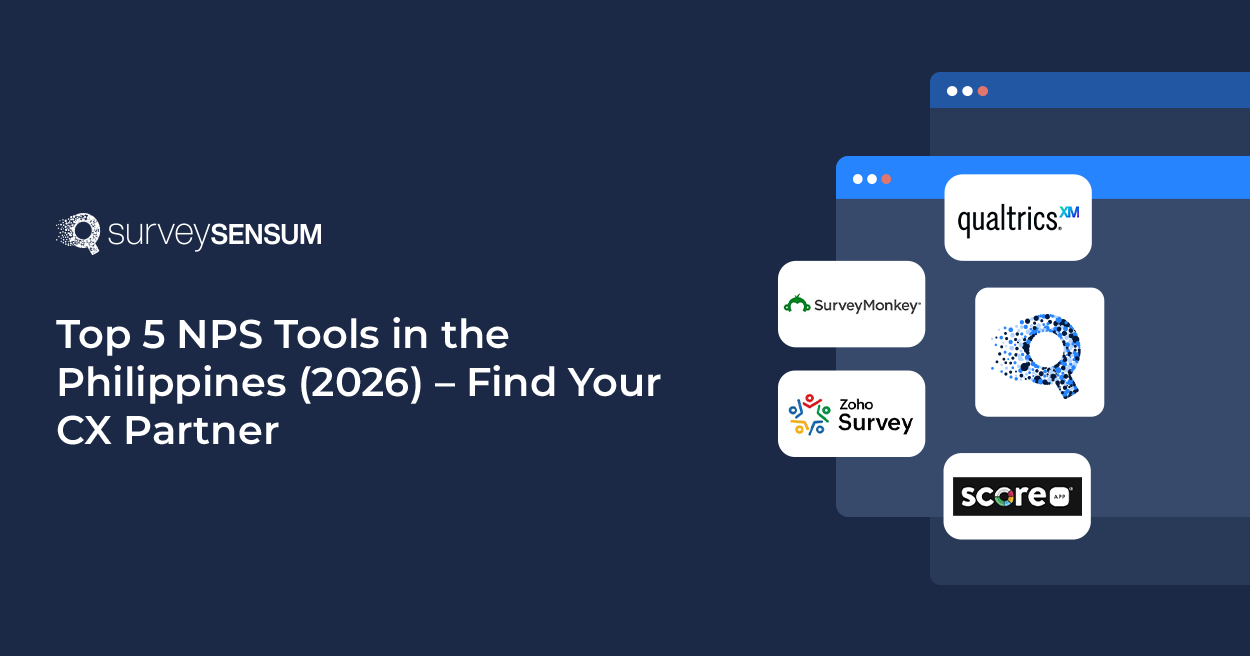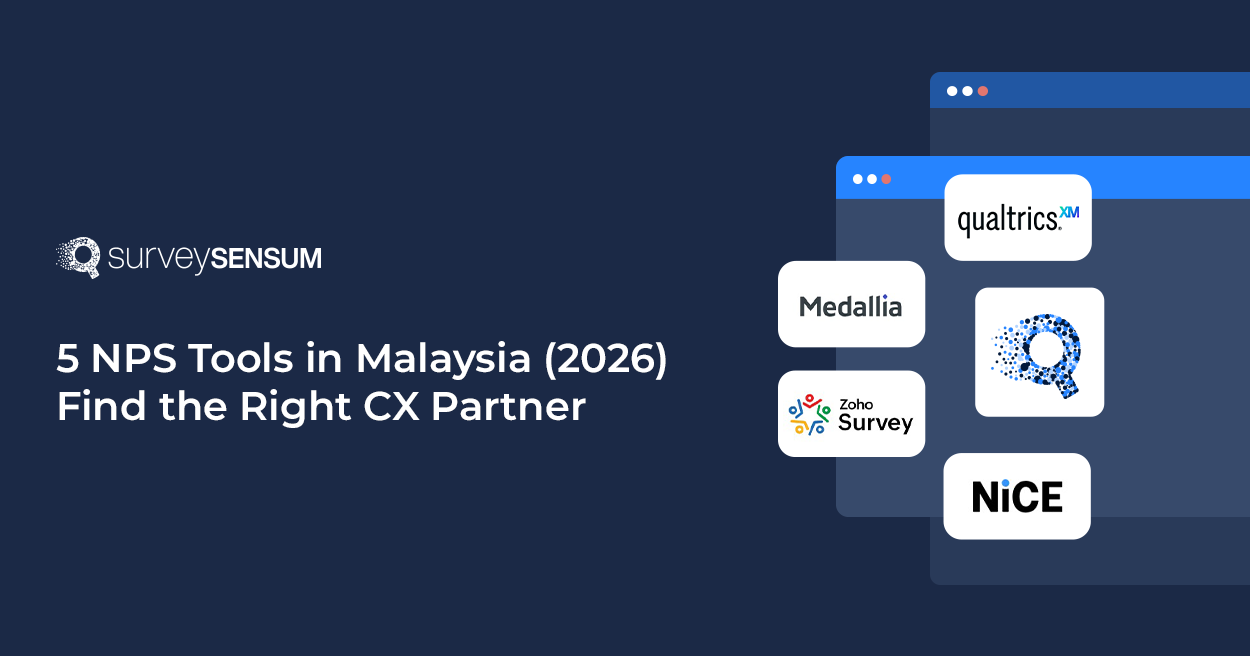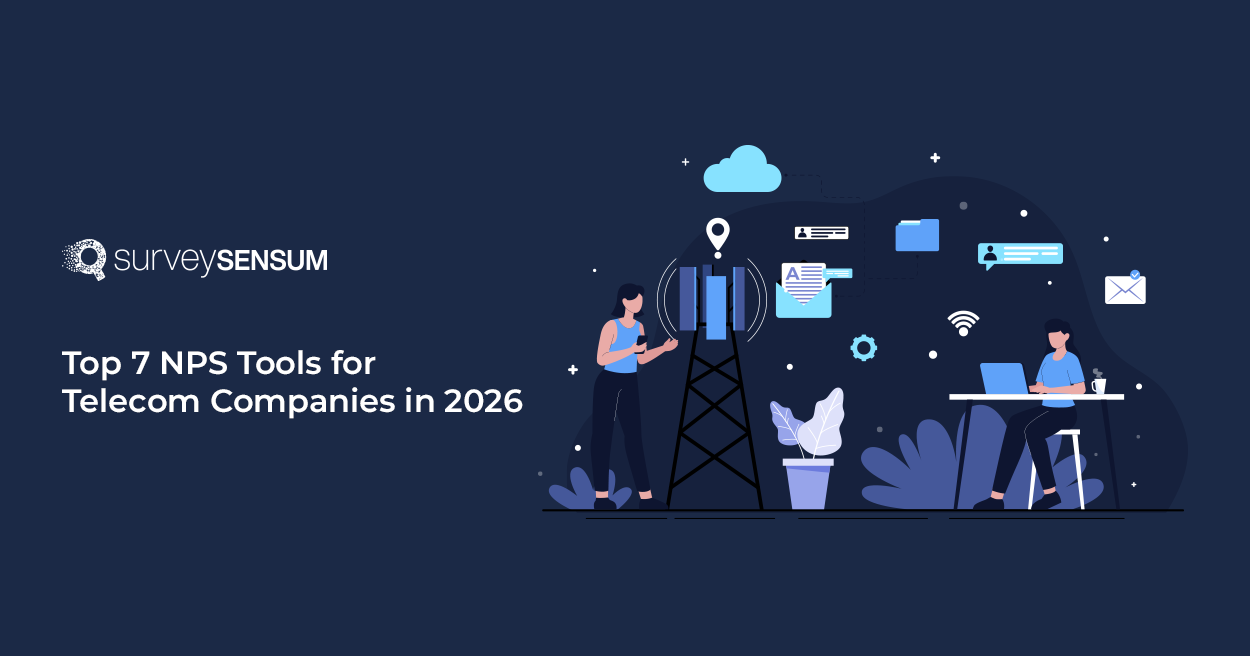

There is no greater mark of loyalty than a customer recommending your product to another one. It is what every company strives to achieve with its customers.
And how do you know if your customer has reached that level of loyalty and satisfaction with you? – With NPS!
There are a multitude of ways in which an NPS question can be asked, but the trick lies in asking it through the right medium. After all the trick to getting relevant feedback is to catch your users on their preferred channels.
Now, what is the most common and popular marketing channel that is widely used and easily accessible to users of all segments? – Emails
NPS Email Surveys are one of the best ways to get valuable feedback from customers as it is one of the most popular channels of communication that is majorly used and preferred by users of all segments due to its level of simplicity and ease of use.
But the challenge is to create effective surveys that your customers want to fill up, right?
So, let’s scroll down and discover some of the tried and tested best practices for creating effective NPS email surveys that will get you the response you want and take your NPS program to a whole new level.
But first thing first, let’s understand NPS Email Surveys in detail.
What are NPS Email Surveys?

NPS email survey is an NPS survey sent to customers via email asking them to rate, on a scale of 0 to 10, how likely they are to recommend the company’s product or service to others.
This metric provides businesses with valuable insights into customer satisfaction and helps them identify areas for improvement.
However, while working with many organizations I have seen that while they send NPS email surveys, they don’t get enough response rates. So, let’s remedy that with the 9 steps that ensure that you get well enough NPS response rates on your surveys.
How Do You Create Effective NPS Email Surveys That Drive Responses: 9 Steps
Creating effective NPS email surveys involves several key practices to ensure high response rates and valuable insights:
1. Grab Customers’ Attention with Clear Subject Lines
Use a subject line that grabs attention and clearly indicates the purpose of the survey. It’s the first thing recipients see and can significantly impact open rates.
| Incorrect Subject Line | Better – Engaging Subject Line |
| “Customer Satisfaction Survey” | “Help Us Improve Your Experience! Rate Us Now and Win” |
You can also include a subject line like this to create a sense of urgency and interest:
“Only two days to share your experience with us!”
→ Read more on the 50+ NPS Email Subject Lines Examples.
2. Include Personalized Salutations

72% of consumers say they only respond to personalized messaging, including emails. That’s a huge number, right? So address the recipient by their name to add a personalized touch and increase the chances of them opening the email. This sounds more convincing than a generic salutation like “Hello” or “Welcome”, right?
3. Include Follow-up Questions

Include follow-up questions to gather qualitative feedback, such as reasons for their score, what they like/dislike about the product/service, and suggestions for improvement. By incorporating these follow-up questions, you can gather detailed qualitative feedback that not only identifies pain points but also provides actionable insights for improvement and innovation.
For example: “What is the primary reason for your score?” or “What do you like most about our products/services?”
4. Clear Call-to-Action (CTA)
Provide a clear and visible CTA button or link for recipients to click and complete the survey. Use persuasive language like “Share Your Feedback Now” or “Take the Survey.” This helps in increasing your response rate and will bring you a step closer to your surveying goal.
→Read more about how you can improve your NPS score for enhanced business success.
5. Ensure a Mobile-Friendly Design

Ensure that your email surveys are optimized for mobile devices, as many recipients access emails on their smartphones or tablets. This increases the accessibility of your survey and also helps in gathering more responses.
6. Keep it Short and Engaging

Surveys with less than 5 questions typically see completion rates above 80%.
Now, I’m sure you would also want such high response rates! So keep the email survey short and engaging to maintain recipients’ interest and encourage completion. Avoid long paragraphs or complex NPS questions. No one wants to spend their reading long messages just to fill out a survey, right?
7. Sprinkle Around Incentives (Optional)
A $10 incentive increased the likelihood of someone returning a survey by 30% and boosted the number of returned surveys by 18%.
Now that makes a huge difference! So, consider offering incentives such as discounts, freebies, or entries into a prize draw to motivate recipients to participate in the survey. It’s what will prompt your customers to go through the effort and provide feedback.
For example: “Complete the survey for a chance to win a $50 gift card!”
8. Reminders and Follow-ups

If recipients don’t respond to the initial NPS survey, consider sending a follow-up reminder after a few days. Keep the reminder brief and friendly, encouraging them to share their feedback. This directly improves the response rate!
→ Read more on the NPS Followup Emails.
9. Thank You Message
End the email with a sincere thank you message for their time and feedback, reinforcing that their feedback is valued and will be acted upon. Always consider following up with them to acknowledge their feedback and share any actions taken based on their input. This helps build rapport and shows that you value their opinions.
→ Read further on how to create a NPS survey for your company!
Why wait when you can create effective email surveys including all these parameters with SurveySensum in under 5 minutes?
By following these best practices, you can create NPS email surveys that are engaging, easy to respond to and yield valuable insights for improving customer satisfaction and loyalty.
Best Practices for NPS Email Surveys
Here are some best practices for conducting NPS email surveys:
1. When to Send NPS Survey: Sending surveys when recipients are most likely to be available and attentive, such as during non-busy hours or avoiding holidays, ensures higher engagement. This strategic timing maximizes the chances of receiving timely and accurate feedback, leading to more reliable data for informed decision-making.
2. Clear Instructions: Provide clear instructions on how to respond to the survey and what the rating scale (0-10) represents. Include examples to help recipients understand how to rate their experience.
3. Engaging Content: Use engaging and conversational language in the NPS email survey. Explain the importance of their feedback and how it will be used to improve their experience.
4. Regular Monitoring and Analysis: Monitor the responses regularly and analyze the feedback with NPS reports and dashboards to identify trends, insights, and areas for improvement. This enables you to recognize the areas of improvement and take strategic actions on the feedback.
While there are many NPS software tools in the market, ensure that the one that you choose offers you a comprehensive dashboard for detailed analysis!
5. NPS Benchmarking: Benchmarking your NPS score helps you understand the performance of your NPS program and where you position yourself against the competitors.
6. Close the feedback loop: Not taking action on customer feedback not only leads to disgruntled customers but directly impacts their satisfaction and future response rates. So, ensure that you take action and communicate these actions to customers to show that their feedback is taken seriously.
Taking action on the NPS feedback and communicating the changes with the customers directly impacts your score, taking it a step further into having a good NPS score.
7. Color-coding NPS Surveys: Color-coding NPS surveys can significantly enhance the visual appeal and effectiveness of your survey. By using colors strategically, you can convey information more effectively and engage respondents better.
However, there are many expert opinions on whether you should or shouldn’t color-code your NPS surveys. Read further to deep dive — Expert Advise on the Impact of Color Coding the NPS Scale
8. 5-point vs 11-point NPS Survey: The choice of using either of the surveys depends on your requirements and objectives. However, while a 5-point scale is more mobile-friendly, an 11-point scale helps in external benchmarking and shows a more inclusive image of detractors, passives, and promoters.
By following these best practices, you can maximize the effectiveness of your NPS email surveys and gather valuable insights to drive customer satisfaction and loyalty.
Conclusion
NPS email surveys are a powerful tool for measuring customer loyalty and satisfaction. By asking the right questions through the right medium, such as email, businesses can gain valuable insights into customer sentiments and identify areas for improvement. Employing the best practices of crafting an NPS survey program can give businesses an edge over others in their industry.
To create effective surveys that gather responses, you need a robust customer feedback tool like SurveySensum to get the job done. It has a user-friendly interface that helps you craft surveys in no time. It also helps analyze responses with its AI-enabled features like Text Analytics and gives a comprehensive overview of your entire process with its customizable dashboards.



















